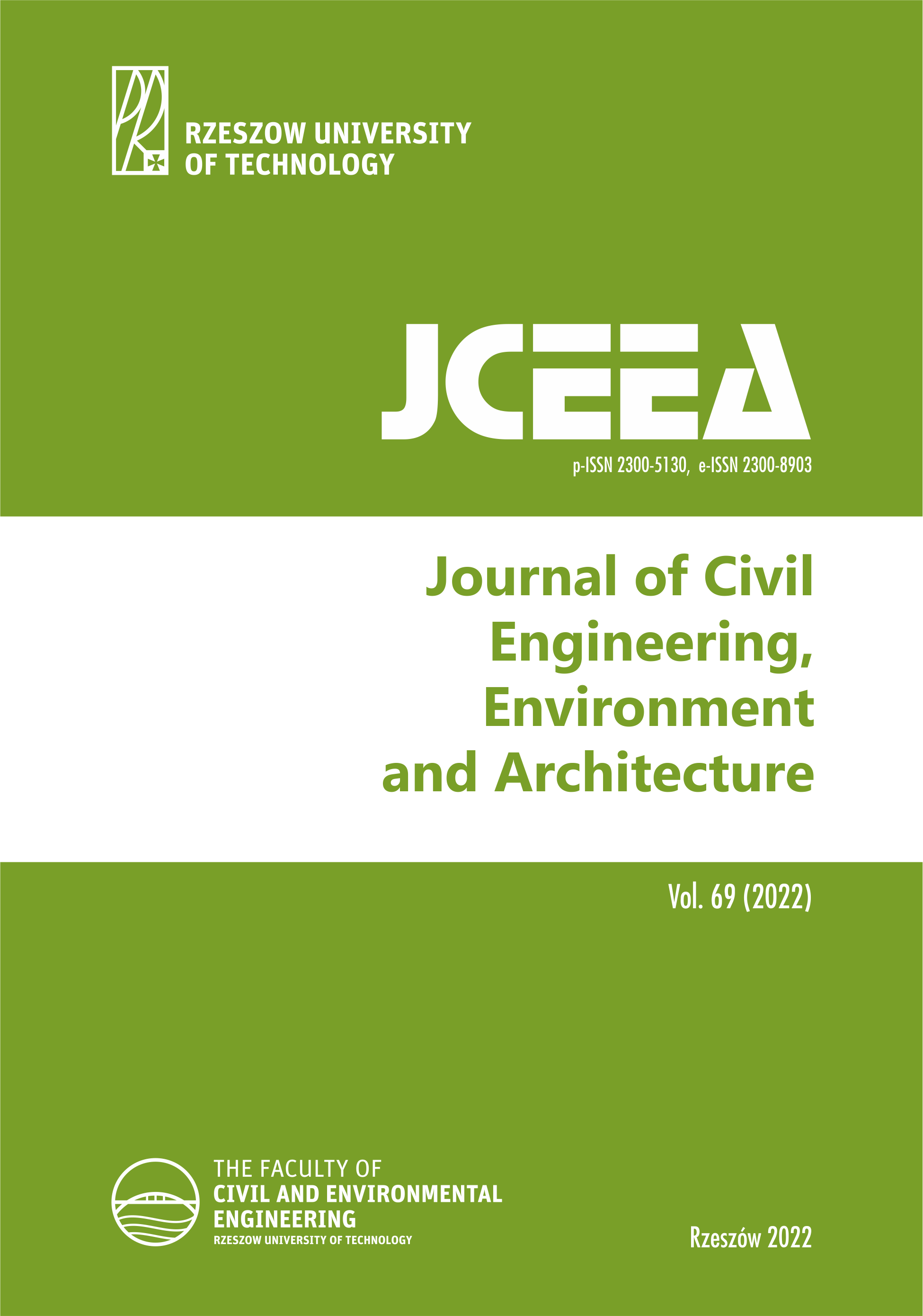Abstract
Mastic asphalt mixture (MA) has been particularly popular in recent years for bridge pavements due to many advantages, such as easy application, good waterproofing properties and high durability. However, the drawback of the mastic asphalt mixture in comparison to other asphalt mixtures is its lower resistance to permanent deformation. Additive, such as natural asphalt Trinidad Lake Asphalt (TLA) is often applied to make the mastic asphalt mixture resistant to permanent deformation. Practical experience demonstrates that serious failures may occur if MA pavement design and materials selection is not taken into account sufficiently. Therefore, in this study, the influence of two parameters: the TLA content and bitumen-filler mastic composition described by the filler-binder ratio (f/b), on the rutting resistance of the MA mixture, were evaluated. The rutting resistance of the MA mixtures was evaluated on the basis of static and dynamic indentation tests. Both parameters showed a high correlation with the rutting parameters. The mathematical relationships can be used for the prediction of MA composition in such a way that the final MA mixture meets the relevant requirements of the rutting resistance.
References
Bichajło L., Kołodziej K.: Wpływ dodatku asfaltu naturalnego Trynidad Epure na podstawowe cechy asfaltu drogowego, Technika Transportu Szynowego, 2015, vol. 22, pp. 126-130
Cao L.: Experiment Research of Filler-Bitumen Ratio Impact on Asphalt Mixture Performance, Applied Mechanics and Materials, 2013, vol. 361-363, pp. 1851-1856
Chen X., Huang W., Qian Z., Zhang L.:Design principle of deck pavements for long-span steel bridges with heavy-duty traffic in China”, Road Materials and Pavement Design, 2017, vol. 18, pp. 226-239
Feng M., Zhen F., Lilong W.: Asphalt-Aggregate Adhesion Work of Natural Asphalt Modified Asphalt, International Journal of Pavement Research and Technology, 2014 vol. 6, pp. 456-460
Fengler R. Z.,. Osmari P. H, Leite L. F. M.,. Nascimento L. A. H. D,. Fritzen M. A, Aragão F. T. S.: Impact of the addition of Trinidad Lake Asphalt (TLA) on the rheological and mechanical behavior of two asphalt binders, Road Materials and Pavement Design, 2019, vol. 20, pp. 827–840
He R., Zheng S., Chen H., Kuang D.: Investigation of the physical and rheological properties of Trinidad lake asphalt modified bitumen, Construction and Building Materials, 2019, vol. 203, pp. 734–739
Iwański M., Mazurek G.: Influence of F-T Synthetic Wax on Asphalt Concrete Permanent Deformation, Archives of Civil Engineering, 2013, no. 3, pp. 259-312
Judycki J.: Niewłaściwe proporcje ‘wypełniacz-asfalt’ w betonie asfaltowym możliwą przyczyną uszkodzeń nawierzchni, Drogownictwo, 2007, vol. 10, pp. 311-313
Kołodziej K., Bichajło L.: Effect of natural asphalt TLA on mastic asphalt ageing Journal of Civil Engineering, Environment and Architecture JCEEA, 2016, vol. 33, pp. 233-241
Laborhandbuch für Trinidad Naturasphalt. Bremen, Germany: Carl Ungewitter Trinidad Lake Asphalt GmbH & Co, 2013
Lebedev M. S., Kozhukhova N. I.: Rheological characteristics of bitumen mastic depending on composition and filler dispersity, IOP Conf. Series: Journal of Physics: Conf. Series, 2018, vol. 1045, pp. 1-7
Li R., Wang P., Xue B., Pei J.: Experimental study on aging properties and modification mechanism of Trinidad lake asphalt modified bitumen, Construction and Building Materials, 2015, vol. 101, pp. 878-883
Liao M., Chen J., Airey G. D., Wang S.: Rheological behavior of bitumen mixed with Trinidad lake asphalt Construction and Building Materials, 2014 vol. 66, pp. 361–367
Luo S., Qian Z., Yang X., Wang H.: Design of gussasphalt mixtures based on performance of gussasphalt binders, mastics and mixtures, Construction and Building Materials, 2017, vol. 156, pp. 131–141
Mazurek G.: Effect of filler type on non-linear viscoelastic characteristics of asphalt mastic, Archives of Civil Engineering, 2021, vol. 67, pp. 247-259
Mitchell M., Link R., Cao W.-D., Yao Z., Liu S., Cui X.: Performance of composite modified asphalt with Trinidad lake asphalt used as waterproofing material for bridge deck pavement, Journal of Testing and Evaluation, 2009, vol. 37, pp. 463–467
Pokorski P., Radziszewski P., Sarnowski M.: Fatigue life of asphalt pavements on bridge decks, Procedia Engineering, 2016, vol. 153, pp. 556–562
Radziszewski P., Piłat J., Sarnowski M., Kowalski K., Król J.: Influence of high temperature on properties of materials used in bridge asphalt pavement structures, Roads and Bridges - Drogi i Mosty, 2015, vol. 14, pp. 175–191
Šedina J., Valentin J., Benešová L.: Alternative modifications of bituminous binders for mastic asphalt mixtures, IOP Conference Series: Materials Science and Engineering, 2017, vol. 236, pp. 1-9,
Słowik M., Bilski M.: An experimental study of the impact of aging on Gilsonite and Trinidad Epuré modified asphalt binders properties, The Baltic Journal of Road and Bridge Engineering, 2017, vol. 12, pp. 71–81
Superpave Fundamentals Reference Manual, Washington, DC, USA: FHWA, 2000
Teng T. P.: Superpave Mixture Design Guide, Washington, DC, USA: FHWA, 2001
Wang H., Li. G.: Study of factors influencing gussasphalt mixture performance, Construction and Building Materials, 2015, vol. 101, pp. 193–200
Wang H., Li. G.: Study on high-temperature stability of composite gussasphalt concrete, Materials Research Innovations, 2015, vol. 19, pp. 494 -499
Wang M., Hu D., Xiao L., Shang, F.: Developments of Gussasphalt System on Steel Deck Pavement, World Journal of Engineering and Technology, 2017, vol. 5, pp. 141–147
Widyatmoko I., Elliott R.: Characteristics of elastomeric and plastomeric binders in contact with natural asphalts, Construction and Building Materials, 2008, vol. 22, pp. 239–249
Widyatmoko I.: Damages of Orthotropic Bridge Deck Surfacing: Forensic Investigation, Remedial Work and Performance Monitoring, Jurnal Kejuruteraan. 2021, vol. 33, pp. 281–291
WT-2 2014 – Część 1. Nawierzchnie asfaltowe. Mieszanki mineralno-asfaltowe. Wymagania Techniczne. Warszawa, GDDKiA, 2014
Xu S., Hu C., Yu J., Liu R., Zhou X.: Influence of Trinidad Lake Asphalt on the physical and anti-aging properties of petroleum asphalt, Petroleum Science and Technology, 2017, vol. 35, pp. 2194-2200
Zou G., Xu X., Li J., Yu H., Wang C., Sun J.: The effects of bituminous binder on the performance of gussasphalt concrete for bridge deck pavement, Materials, 2020, vol. 13, pp. 1-12
Zou G., Zhang X., Wu C.: Experimental method of fatigue performance of mastic asphalt for bridge deck pavement, The Baltic Journal of Road and Bridge Engineering, 2019, vol. 14, pp. 568–586

